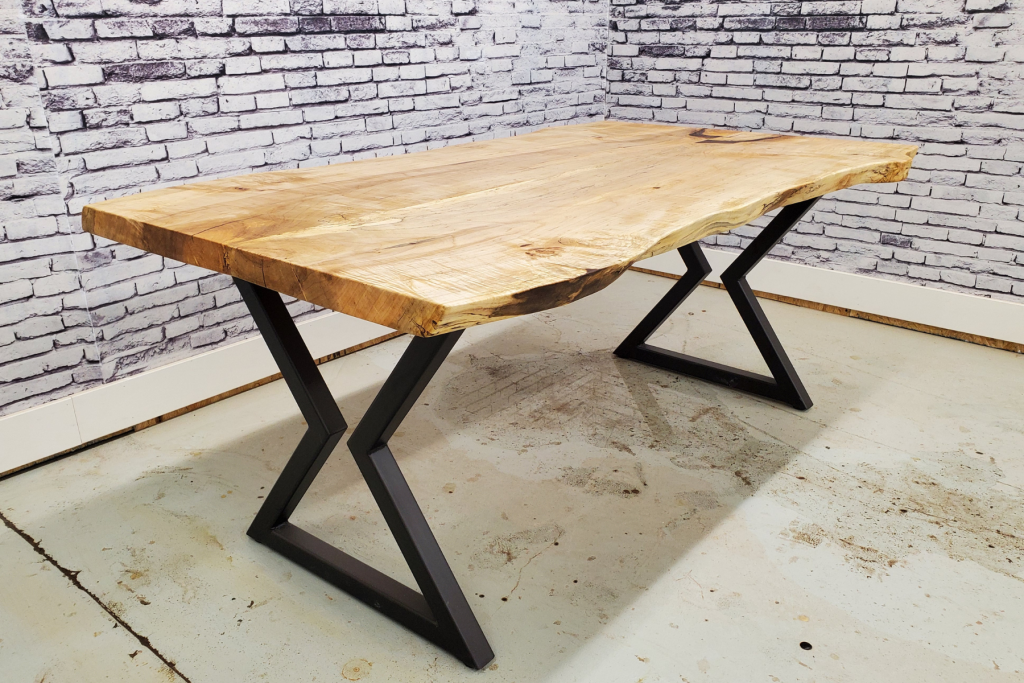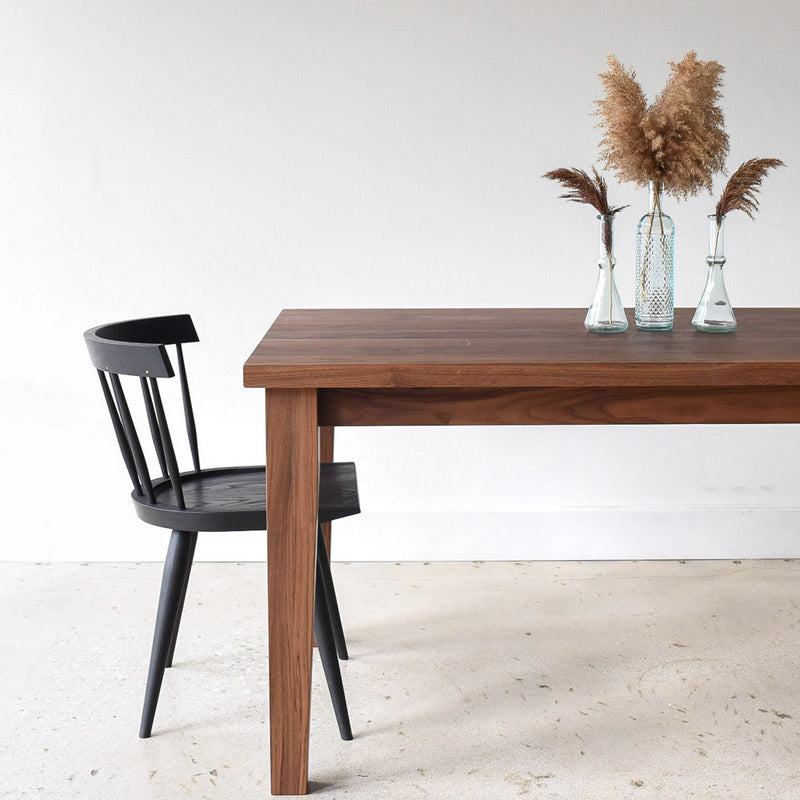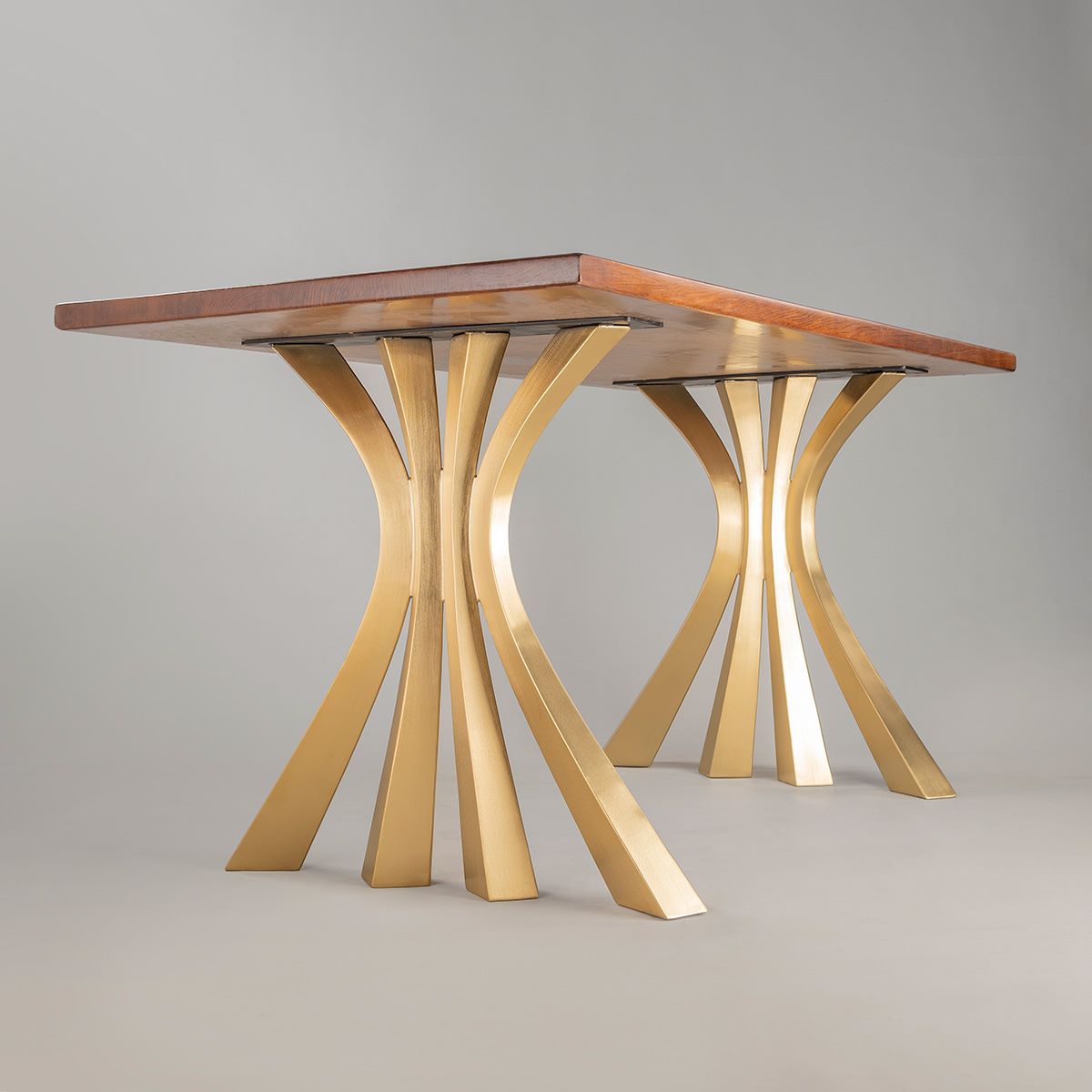Vital Factors To Consider for Selecting the Right Table Legs Timber
Selecting the proper wood for eating table legs includes a nuanced understanding of numerous elements that affect both functionality and aesthetic appeal. The choice of timber type, ranging from robust woods to much more fragile softwoods, plays a critical function in making sure sturdiness and security. Additionally, factors to consider regarding maintenance, spending plan, and design should be diligently evaluated. Each of these elements can drastically influence the total experience of your dining space. Comprehending just how these factors relate is important for making a notified decision that meets your particular requirements and preferences - Dining Table Legs Wood. What factors to consider will you prioritize in your selection procedure?
Significance of Timber Kind

Hardwoods, such as oak, walnut, and maple, are commonly favored for their toughness and resistance to put on. These sorts of timber supply a robust foundation that can endure everyday use, making them optimal for dining tables that experience frequent gatherings. On the other hand, softer timbers like pine might be extra vulnerable to scrapes and damages, which might not be perfect for high-traffic areas.
In addition, the selection of wood can likewise influence the simplicity of upkeep. Some woods require regular oiling or sealing to maintain their look, while others may be extra flexible. Ultimately, selecting the proper wood type includes balancing visual considerations with functional requirements, guaranteeing that the table legs not just look attractive however also stand the examination of time.
Examining Stability and Strength
When examining table legs, one must take into consideration the stability and strength they give to the general structure. The legs are critical in sustaining the tabletop and guaranteeing the eating experience is delightful and risk-free. A secure table is necessary for stopping tipping or wobbling, which can bring about spills or mishaps throughout meals.
The choice of wood type significantly affects strength. Hardwoods such as oak, maple, and walnut are usually more resilient and durable than softwoods like pine or fir. Additionally, the density and layout of the legs play a vital duty; thicker legs or those with a tapered style can offer much better assistance and security.

Visual Factors To Consider
While performance is extremely important, the aesthetic charm of eating table legs can not be forgotten, as they dramatically influence the general layout and ambiance of the dining area. The selection of style, surface, and timber can detract or improve from the table's aesthetic influence.

Surfaces also play a crucial function in aesthetic appeals. An all-natural surface can highlight the timber's inherent charm, while repainted or stained legs can introduce shade and personality into the area. Furthermore, the proportion and scale of the legs loved one to the tabletop and surrounding furnishings must be thought about to ensure visual balance and cohesion.
Eventually, the eating table legs need to try this not just offer a practical objective but also contribute to a cohesive and inviting environment, making them see here an essential consideration in the overall design of the dining area.
Maintenance Requirements
To guarantee durability and protect the beauty of wooden table legs, regular upkeep is important (Dining Table Legs Wood). Wood is an all-natural material that can be susceptible to damage from dampness, warmth, and wear. Establishing a regular treatment plan will considerably enhance the longevity of your eating table legs.
Begin with routine dusting utilizing a soft, lint-free towel to get rid of dirt and debris that can damage the surface area. For more thorough cleaning, use a moderate soap solution and damp fabric, staying clear of excess moisture that can seep into the timber. It is advisable to apply a premium timber polish or conditioner every few months to nurture the wood and preserve its gloss.
Address any kind of dents or scratches quickly with appropriate timber filler or touch-up pens to stop further deterioration. By sticking to these maintenance demands, you will not just maintain the visual allure of your wooden dining table legs but also prolong their useful life expectancy.
Budget Plan and Expense Variables
Spending plan and expense factors regularly play a critical role in the decision-making process for choosing wooden table legs. When assessing alternatives, it is important to develop a clear budget that straightens with your overall furnishings financial investment. The price of wood table legs can vary significantly based upon the type of wood, workmanship, and layout complexity.
Woods such as walnut, cherry, and oak normally regulate higher rates due to their sturdiness and visual allure. In contrast, softer timbers like ache may be much more budget-friendly however could not supply the very same durability. Furthermore, personalized or artisan-crafted legs can sustain extra expenses, reflecting the skill and time purchased their production.
It is additionally important to think about the possible long-term value of your financial investment. While choosing lower-cost products may appear financially prudent at first, they might need more regular replacement or fixings, eventually raising general expenditure.
Consequently, stabilizing quality and price is crucial. Prioritize materials that satisfy your aesthetic choices while guaranteeing they fit easily within your spending plan, allowing you important source to develop a dining area that is both practical and visually attractive.
Verdict
Finally, picking the proper wood for dining table legs requires cautious factor to consider of different aspects, including wood kind, stability, looks, maintenance, and budget. Hardwoods such as oak and walnut give superior toughness and strength, while design and thickness add to total security. Aesthetic appeal and maintenance demands have to straighten with private preferences and lifestyle. Ultimately, a knowledgeable decision will enhance the long life and aesthetic allure of the dining table, ensuring contentment and functionality for several years ahead.
Picking the best type of wood for dining table legs is vital for both visual appeal and architectural stability. Eventually, choosing the appropriate timber kind entails balancing aesthetic considerations with sensible needs, making certain that the eating table legs not only look enticing yet additionally stand the test of time.
It is suggested to apply a top notch timber polish or conditioner every couple of months to nurture the wood and maintain its luster.
The price of wooden eating table legs can vary considerably based on the type of craftsmanship, wood, and style intricacy.
In conclusion, selecting the suitable timber for dining table legs necessitates mindful factor to consider of numerous variables, including wood kind, stability, looks, upkeep, and budget plan.